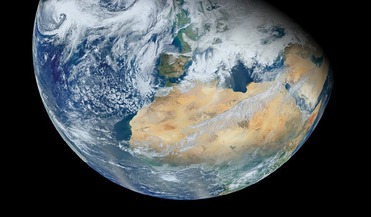 March 2016
Saving Earth from an Expanding Sun
March 2016
Saving Earth from an Expanding Sun
...Earth and probably had oceans at the beginning. But Venus orbits closer to the Sun and was never in... that are harming the Earth. Magellan synthetic aperture radar mosaic of Venus Indeed, most of the actions required to prevent global climate change ...
 22 December 2017
Where is NASA going next?
22 December 2017
Where is NASA going next?
... future mission competitions. These are the Enceladus Life Signatures and Habitability (ELSAH) mission and the Venus In situ Composition Investigations (VICI). ELSAH will receive funds to develop cost-effective techniques that limit spacecraft...
 03 June 2021
Nelson announces NASA’s return to Venus
03 June 2021
Nelson announces NASA’s return to Venus
... of features on the surface that may help scientists figure out whether Venus had an ocean or plate tectonics like Earth. VERITAS, meanwhile, is short for Venus Emissivity, Radio Science, InSAR, Topography, and Spectroscopy. Its purpose is to map...
 August 2018
Exoplanet census promises radical discoveries
August 2018
Exoplanet census promises radical discoveries
... ranging down to less than the mass of Mars (at one tenth of an Earth mass) at separations ranging from that of Venus to beyond the orbital separation of Neptune, including rogue planets. Figure 3: Two simulated coronagraph images of a Jupiter-sized...
 October 2017
Exploring Jupiter’s icy moons
October 2017
Exploring Jupiter’s icy moons
...distance of 12,700 km (7,890 miles) in May 2023 JUICE will fly past Venus at a distance of 9,500 km (5,900 miles) in October 2023 The ... has worked on projects including Huygens, Chandrayaan-1, Venus Express, Mars Express, and ExoMars and since January 2015...
 March 2015
Chasing comets together: the Vega project in the USSR and beyond
March 2015
Chasing comets together: the Vega project in the USSR and beyond
... for European projects for the chance to participate in just one or two experiments, or to install its own equipment on Venus’ or Mars’ orbital satellite. It should be understood that launching Western spacecraft does not help develop technology for...